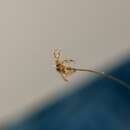en
names in breadcrumbs


Sucking lice (Anoplura, formerly known as Siphunculata) have around 500 species and represent the smaller of the two traditional superfamilies of lice. As opposed to the paraphyletic chewing lice, which are now divided among three suborders, the sucking lice are monophyletic.
The Anoplura are all blood-feeding ectoparasites of mammals. They only occur on about 20% of all placentalian mammal species, and are unknown from several orders of mammals (Monotremata, Edentata, Pholidota, Chiroptera, Cetacea, Sirenia, and Proboscidea).[1] They can cause localized skin irritations and are vectors of several blood-borne diseases. Children appear particularly susceptible to attracting lice, possibly due to their fine hair.
At least three species or subspecies of Anoplura are parasites of humans; the human condition of being infested with sucking lice is called pediculosis. Pediculus humanus is divided into two subspecies, Pediculus humanus humanus, or the human body louse, sometimes nicknamed "the seam squirrel" for its habit of laying of eggs in the seams of clothing, and Pediculus humanus capitis, or the human head louse. Pthirus pubis (the human pubic louse) is the cause of the condition known as crabs.
These 15 families are generally recognized in the Anoplura:[2]
Sucking lice (Anoplura, formerly known as Siphunculata) have around 500 species and represent the smaller of the two traditional superfamilies of lice. As opposed to the paraphyletic chewing lice, which are now divided among three suborders, the sucking lice are monophyletic.
The Anoplura are all blood-feeding ectoparasites of mammals. They only occur on about 20% of all placentalian mammal species, and are unknown from several orders of mammals (Monotremata, Edentata, Pholidota, Chiroptera, Cetacea, Sirenia, and Proboscidea). They can cause localized skin irritations and are vectors of several blood-borne diseases. Children appear particularly susceptible to attracting lice, possibly due to their fine hair.
At least three species or subspecies of Anoplura are parasites of humans; the human condition of being infested with sucking lice is called pediculosis. Pediculus humanus is divided into two subspecies, Pediculus humanus humanus, or the human body louse, sometimes nicknamed "the seam squirrel" for its habit of laying of eggs in the seams of clothing, and Pediculus humanus capitis, or the human head louse. Pthirus pubis (the human pubic louse) is the cause of the condition known as crabs.